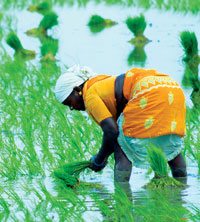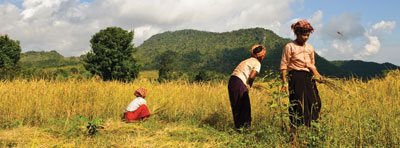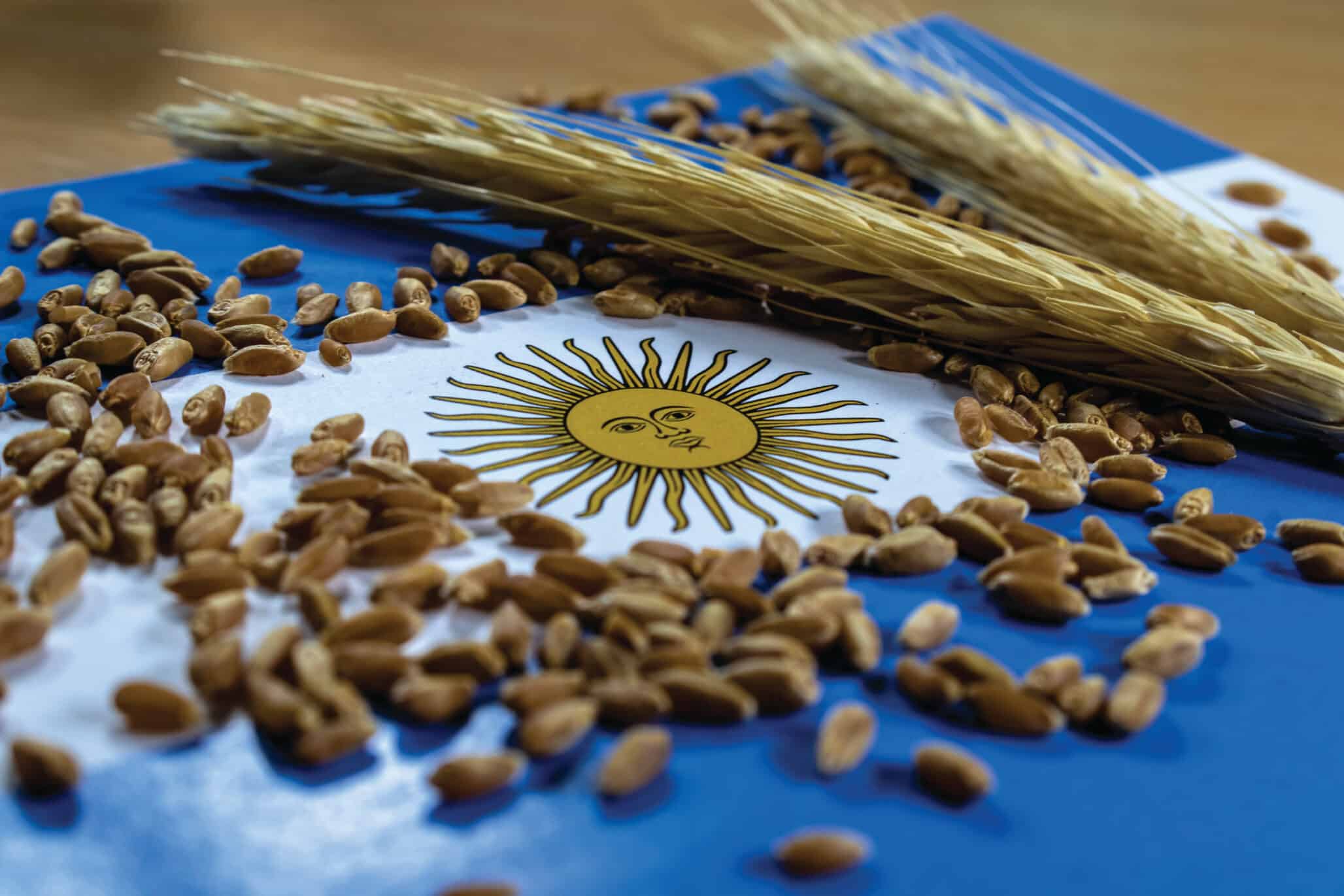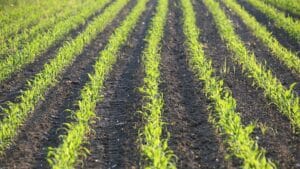IPR Makeover
Updating intellectual property rights laws stimulates investment and innovation while providing striking benefits for farmers in developing countries.
Countries worldwide are making progress on protecting intellectual property rights, creating opportunities and benefits for all seed industry stakeholders.
“I think we’re making good progress around the world,” says Tim Johnson, division president of Illinois Foundation Seeds Inc., and first vice president of the International Seed Federation. “I believe, over the past number of years, people have recognized the value of good intellectual property rights.”
Last February, Johnson spoke at the International Symposium on Seed Intellectual Property Rights and the Fifth National Forum on Agricultural Intellectual Property Rights in Beijing. China wants to improve its laws on intellectual property with respect to seed, with an eye toward the country’s stability, he says. “China wants to understand how other parts of the world look at IPR from a seed standpoint, but ultimately from a food security standpoint. Good IPR laws in your country are the foundation for good food security,” says Johnson.
Like other countries in Asia, Africa, Eastern Europe and South America, China is “making strong progress in understanding the value of good IPR laws, and what that does for innovation among companies,” says Johnson. “China wants Chinese companies to have good laws in place so that companies will invest in innovation. What they’re looking at through these symposiums is how to best adjust the laws to create innovation within China and also to have the ability to bring innovation in from outside of China.” Innovation is the cornerstone to increasing crop yields and creating new tools for producers to reduce stresses on crops due to pests and changing weather patterns.
Changing Lives
Countries in which intellectual property protection systems are being adopted, reviewed or updated are experiencing many benefits in addition to food security. Whether it’s access to new germplasm, technologies, new or elite varieties, biotechnology, chemicals and so on, innovation is changing farmers’ lives in developing countries in dramatic ways.
“I met a farmer in South Africa who switched to biotech corn once it was approved in that country, and his kids went from working on the farm to [attending] private school. It’s not just about increasing yields and the bottom line, it’s about changing your whole life and the opportunities for your family,” says Denise Dewar, executive director of plant biotechnology for CropLife International.
Another amazing success story is that of India—the country was once a net importer of cotton but is now a net exporter because of its access to improved varieties and its willingness to invest in a commercial marketplace selling high-quality seed, says Dewar.
“In India, [high-quality seed] changed the country overnight because of the impact it had on the rural economy. Farmers went from being subsistence farmers to making a profit. Lifting people out of poverty is the number one benefit of going to higher quality varieties and better technologies, in developing countries in particular,” she says.
The link between intellectual property protection, innovation and the benefits to farmers must be made clearer in the future, says Bernice Slutsky, vice president of science and international affairs for the American Seed Trade Association. “It’s like a circle because they feed into each other—the more benefits you provide farmers, the more they’re going to want the next best seed varieties, which, in turn, drives research. IPR protects that research, so they’re all interconnected,” she says.
Opportunity is knocking loud and hard for countries with government agendas to protect IPR. “If these countries get their intellectual property laws in place, there are enormous opportunities,” says Dewar.
As long as there is political will, the infrastructure and industry will develop. “If the government policy and regulatory framework are in place then business will also fall into place. Where the policy is, the business flows,” says Dewar. For example, countries in South America that have put in favorable policies are booming with biotech products, she says.
China is another country where the business may flow. With good IP laws in place, innovation, investment and technology transfer could increase productivity, and ultimately the prosperity of its people. “With these kinds of improvements not only in seed, but in agriculture as a whole, China can not only feed its own people, but can help other countries. I think that’s a great opportunity for China,” says Johnson.
A country’s choice not to adopt good intellectual property laws also has significant consequences. According to Johnson, not only are yields lower, but intellectual property is abused and food security destabilized. “The farmer, his family and his village suffers” because companies won’t invest in these countries long term, he says.
According to Dewar, farmers don’t have access to the same varieties, technologies or tools. “It’s a big part of why better-quality varieties have not translated into many developing countries,” she says.
Companies are unlikely to send elite germplasm into a country or invest in elite lines in a country without rigorous IPR systems in place, says Slutsky.
Although not perfect, most Western countries have fairly good laws in place to protect IPR, says Dewar, enabling a company’s return on investment to go back into the system. Developing countries may be making progress with respect to strengthening IPR; however, to expect them to be patenting plants in the near future would be unrealistic, she says, and Johnson agrees.
“If we set our expectations or demands there, we set ourselves up for failure in the short term,” he says.
The World Trade Organization’s Agreement on Trade-Related Aspects of Intellectual Property Rights established minimum levels of intellectual property protection national governments must have in place in order to be members of the WTO. Of particular significance to the plant science industry, governments may choose to exclude plants or biological processes for the production of plants from patent protection; however, in this case, plant varieties must be protected by an effective sui generis system. Many leaders in the industry consider that to be the 1991 Act of the International Convention for the Protection of New Varieties of Plants (UPOV).
However, adoption of UPOV ’91 doesn’t have to be an all or none situation, Slutsky says. “Our goal would be to have countries adopt UPOV ’91 or be consistent with the UPOV ’91 convention. If a country has not yet adopted UPOV ’91, we will often encourage them to put in place aspects of UPOV ’91 so they can start moving toward that adoption,” she says.

Although efforts to implement and enforce IPR may vary from country to country, appreciation for those laws is crucial. “You can have great laws in place but it’s also important that people value and respect those laws—that way, you are not spending as much time enforcing your IPR as you are having the capacity to invest more in innovation,” says Johnson. He also cautions against making laws that could stifle innovation. “If there’s not a way to get access to germplasm and traits that have gone off-patent or off plant variety protection it risks stifling innovation,” he adds.
Another factor that checks innovation and investment at the door is the use of farm-saved seed of protected varieties. “UPOV ’91 does allow for a
certain amount of farm-saved seed,” says Slutsky. “However, it’s not something we in any way, shape or form want to encourage. It’s really not to the farmer’s or industry’s advantage—particularly if you’re dealing with varieties that have IP associated with them. Protecting intellectual property goes hand in hand with innovation—developing new and better varieties and all the different technologies that the seed industry uses to develop those new varieties.”
For example, in the United States innovation has been hampered in crops with high rates of farm-saved seed, such as cereals, says Dewar. “Farmers don’t buy their seed every year so the investment doesn’t go back into the system and there isn’t a value-capture mechanism in wheat the way there is in corn. If there was a way to get return on investment, you would see much more R&D happening in crops like wheat,” explains Dewar.
Johnson also believes the use of farm-saved seed of protected varieties isn’t maximizing opportunities for innovation. However, he says it’s up to the seed industry to be the instrument of change. “If you have good IPR laws and you provide better quality seed and farmers value that, they will transition away from farm-saved seed because it’s valuable to them,” he says. “We have the responsibility as a seed industry to prove the value of buying new seed each year to every individual farmer.”
However, proving the value of high-quality seed does not necessarily mean providing it for free. Johnson says access to high-quality seed by small-holder farmers in developing countries is important, but those farmers should be subject to the same rules and conditions when entering the commercial market as others.
“It’s an intricate balancing act, and we have to let the markets work, but every time we carve people out of the market there is less innovation and investment to create new products. If you aren’t innovating and creating major value for that farmer, then the farmer isn’t going to buy seed from you,” he says.
According to Slutsky, producers already recognize that value. “Farmers are smart. Through our international activities, we’ve met with farmers all around the world and they all want the same thing—to plant the best varieties, and for the most part they’re willing to pay for it,” she says.
In the future, when addressing the challenges of climate change and feeding an increasing population, the value of good germplasm, new varieties and technology—protected by IPR—may be self-evident. However, it will be the partnerships formed between governments and the public and private sectors that will make providing enough food, fuel and fiber for the world possible.
“From an industry standpoint, the challenge is going to be for us to step up and be part of the solution, and to work together with the public sector in ways that we never have before,” says Dewar. “There’s going to be a call to the needs of humanity that industry needs to be part of. I think of the legacy of Norman Borlaug when I think of this. He was a man driven to help find that solution and we’re moving into another era when we need to have people like Borlaug helping to make this happen.”
Kari Belanger













